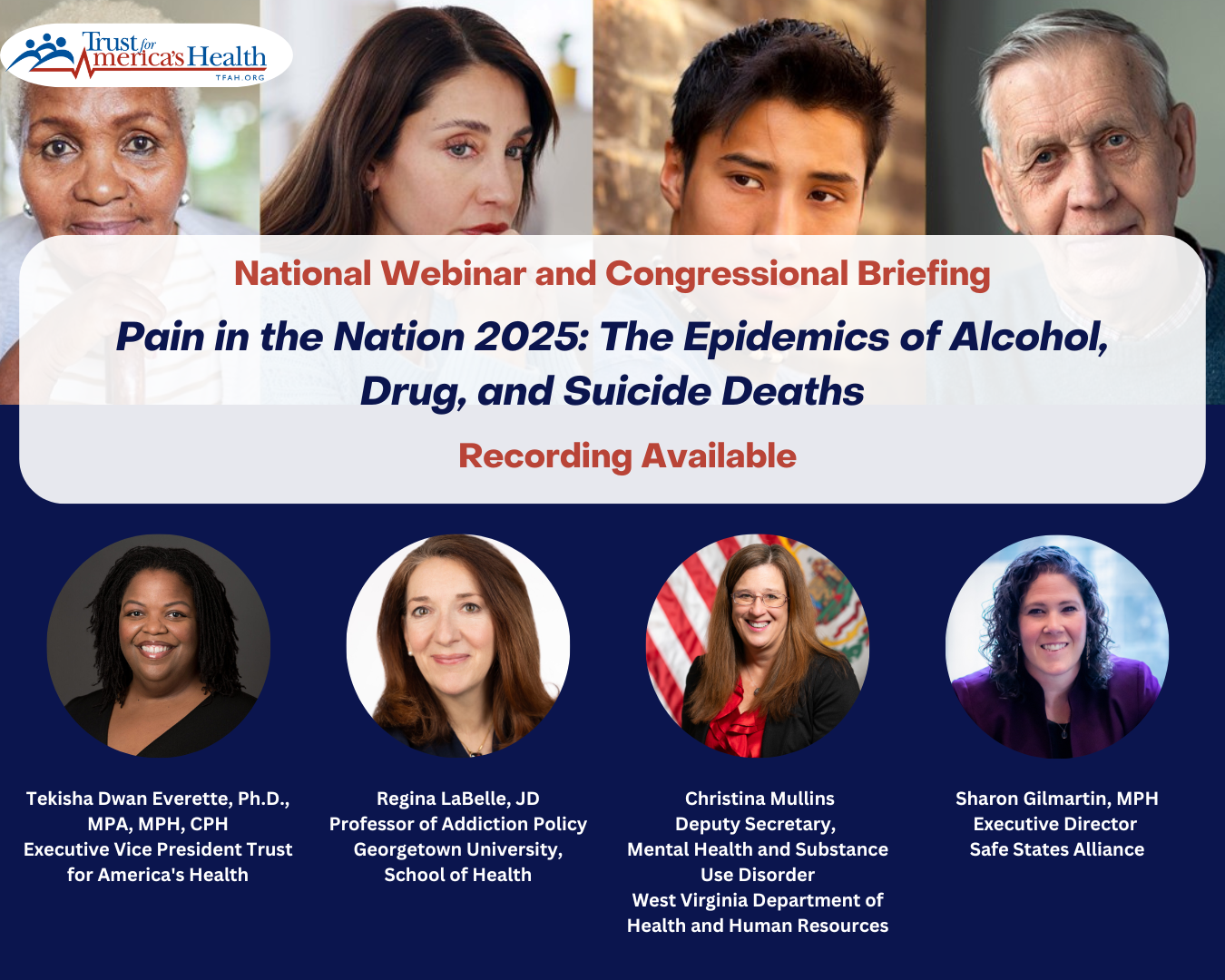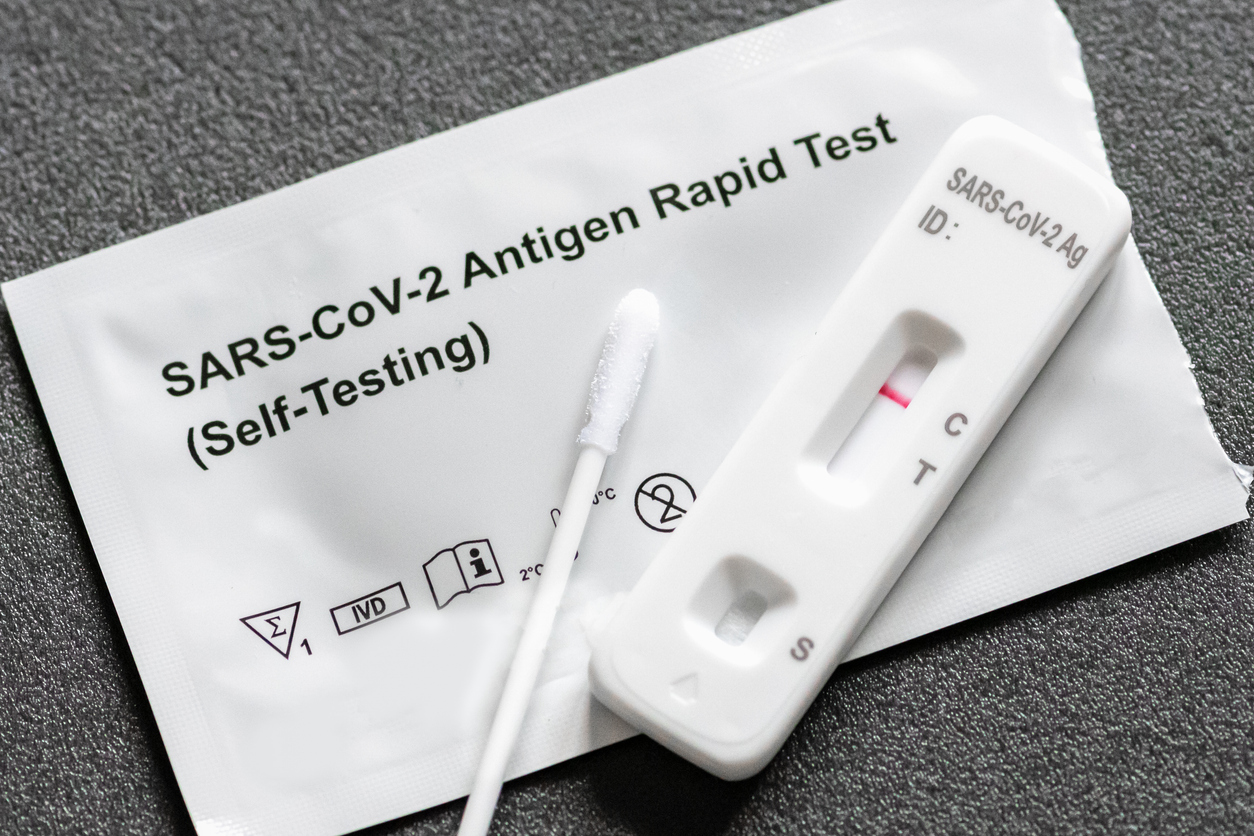Los programas estatales y locales de salud pública y preparación se verán considerablemente afectados
(Washington, DC – 18 de septiembre de 2025) – Los departamentos de salud en estados y localidades de todo el país están enfrentando severas reducciones presupuestarias debido a los recortes federales, recaptura de fondos, despidos y congelamiento de contrataciones, y reorganizaciones, tanto actuales como propuestos. Estas acciones debilitarán considerablemente el sistema sanitario y la preparación y respuesta ante emergencias de la nación y pondrá en peligro la salud y la seguridad económica del país. Estas son las conclusiones de un nuevo informe, Public Health Infrastructure in Crisis: HHS Workforce Cuts, Reorganizations, and Funding Reductions: Impacts and Solutions (“La infraestructura sanitaria en crisis: Recortes de personal del HHS, reorganizaciones y reducciones de financiamiento: impactos y soluciones”) publicado hoy por Trust for America’s Health (TFAH), una organización sin fines de lucro y apartidaria dedicada a la investigación y las políticas en materia de salud pública.
El informe, que incluye un análisis original de TFAH, calcula los impactos de las reducciones presupuestarias y de personal y las reorganizaciones hasta la fecha, así como también los cambios adicionales propuestos, y resalta las siguientes conclusiones:
- El presupuesto plateado por el Presidente para el año fiscal 2026 para los Centros para el Control y la Prevención de Enfermedades (CDC) asciende al 53 % de reducción en comparación con el año fiscal 2024. Esta cifra refleja los recortes propuestos para los CDC y su hermana, la Agencia para Sustancias Tóxicas y el Registro de Enfermedades (ATSDR). Estas reducciones están pendientes de acción en el Congreso.
- Además, dentro del recorte total propuesto, el Programa de Preparación ante Emergencias de Salud Pública de los CDC enfrenta una reducción de fondos del 52 %.
- En total, el presupuesto presentado recorta poco más de la mitad del financiamiento para los CDC y la ATSDR y restaura alrededor de un cuarto de los fondos perdidos hacia dos divisiones del HHS recientemente creadas: la Administración para una América Sana y la Oficina de Estrategias.
- Más de 100 programas de salud pública y líneas de financiamiento serían eliminadas bajo el presupuesto presentado por el Presidente para el año fiscal 2026, incluidos 61 programas de los CDC y 40 programas de la Administración de Salud Mental y Abuso de Sustancias. Entre los programas en riesgo de eliminación están los de prevención de cáncer, diabetes, enfermedad coronaria y accidente cerebrovascular; los de prevención de la obesidad; los de prevención del VIH/SIDA, tanto nacionales como internacionales; los de inmunización global; y los de recuperación y prevención del uso de opiáceos y otras sustancias.
- La reorganización propuesta para las agencias del Departamento de Salud y Servicios Humanos de los Estados Unidos (HHS) reduciría en un 16 % la cantidad de personal que trabaja en programas de salud pública, incluso contando la creación de la Administración para una América Sana que se ha propuesto.
- Este año la rescisión de fondos ya aprobados recapturó 12 000 millones de USD en subvenciones de la época de la covid-19; fondos que además de apoyar la respuesta a la pandemia estaban destinados a reforzar la infraestructura de salud pública más allá de las necesidades creadas por la pandemia, como el monitoreo de enfermedades infecciosas, la capacidad de laboratorio, la preparación ante emergencias y los servicios de salud mental.
El informe se concentra en los cambios en los CDC y otras agencias del HHS debido a su rol central en el apoyo de los programas de salud pública y la respuesta a crisis a nivel estatal y local. Alrededor del 80 % del presupuesto interno de los CDC va hacia estados, localidades, tribus y organizaciones tribales, sistemas de salud y actores comunitarios para apoyar iniciativas de salud pública estatales y locales. Los fondos federales representan cerca de la mitad de los presupuestos de los departamentos de salud estatales y locales, por lo que los recortes en el gasto federal son recortes en los presupuestos de salud pública.
“Los grandes cambios que ocurren en las agencias federales de salud pública afectan a todas las comunidades y tienen impacto sobre la vida de toda la ciudadanía. Los departamentos sanitarios estatales y locales, que están en la primera línea de protección de la salud de sus residentes, dependen del gobierno federal, en particular de los CDC, para obtener financiamiento de la salud pública, experticia y asistencia técnica. Con la pérdida de fondos, personal y programas, nuestro país estará menos preparado para futuras emergencias sanitarias, la salud de la ciudadanía sufrirá y aumentarán los costos de la salud”, dijo J. Nadine Gracia, M.D., MSCE, presidenta y directora ejecutiva de Trust for America’s Health.
El informe incluye entrevistas con dos responsables de oficinas de salud pública —el Dr. Scott Harris, Responsable de la Oficina de Salud Estatal de Alabama, y la Dra. Katherine Wells, Directora de Salud Pública de la ciudad de Lubbock, Texas—, quienes describen los impactos y los desafíos creados en el territorio por las acciones federales, tanto las que están en curso como las que se proponen. Ambas oficinas están luchando con reducciones presupuestarias de por lo menos la mitad de su presupuesto anual como resultado de los recortes federales.
El informe también reconoce que el sistema de salud pública tiene áreas por mejorar. Necesita modernizarse y fortalecerse para satisfacer los desafíos sanitarios tanto actuales como emergentes de la población. El informe hace un llamamiento a la colaboración entre la administración, el Congreso y las oficinas de salud pública para reforzar el sistema con acciones basadas en datos. Algunas de las acciones que recomienda son:
- El Congreso y la administración deberían restaurar las agencias federales de salud, los fondos y el personal que se recortaron en 2025.
- La administración y el Congreso deberían mantener y reforzar la estructura y las capacidades de las agencias federales de salud, que tienen roles específicos, complementarios y distintos y cuentan con experticia en la protección de la salud de la nación.
- El Congreso, en colaboración con agencias federales y especialistas y actores externos, debería llevar adelante un proceso deliberativo bipartidista de revisión de propuestas para la reestructuración de las agencias federales de salud o el desarrollo de nuevas agencias.
- El Congreso y la administración deberían fortalecer el CDC como una agencia de salud pública integral nacional con responsabilidades en materia de detección, prevención y mitigación de las principales causas de muerte prevenible, enfermedades y lesiones.
- Las agencias federales deben gastar todos los fondos asignados por el Congreso, conforme a la ley, y la Oficina de Administración y Presupuesto debería liberar hacia las agencias fondos para todo el año luego de la promulgación de la ley de asignación.
- El Congreso debería garantizar el mejoramiento continuo de las capacidades de salud pública y los servicios esenciales de la nación, como el personal, los laboratorios y los sistemas de datos en todos los niveles.
- El Congreso debería restaurar el Fondo de Prevención y Salud Pública, un fuente crucial de fondos sostenidos para la prevención de enfermedades y actividades de promoción de la salud en cada estado y territorio, así como también en localidades y comunidades tribales, y prevenir futuros recortes.
El informe completo puede leerse en: https://www.tfah.org/report-details/funding-report-2025



